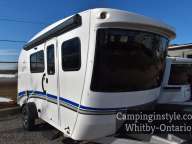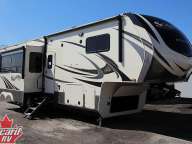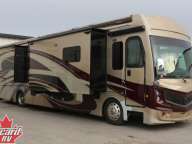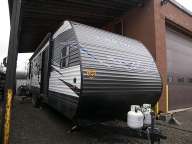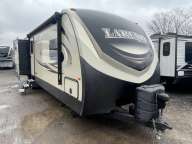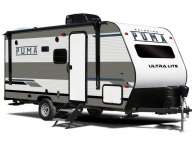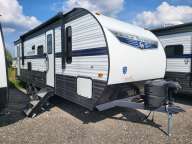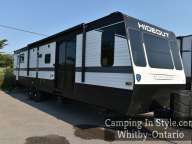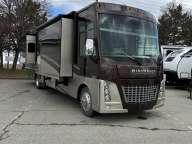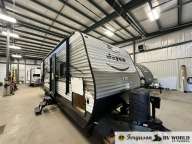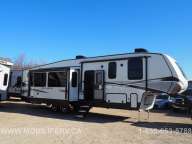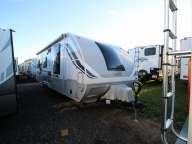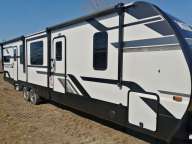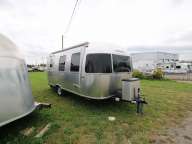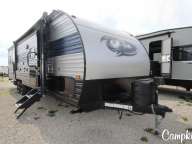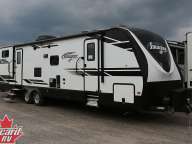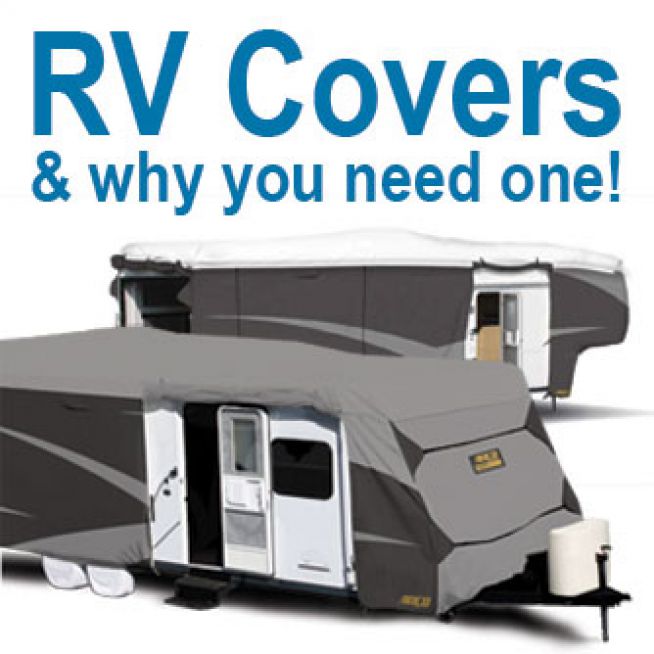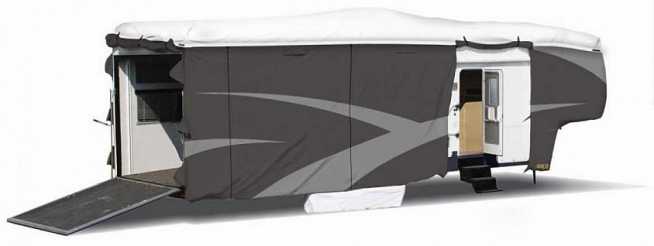
Give Your RV A Blanket!
Here in Canada, storing your RV at the end of camping season is a day most owners are begrudgingly faced with. Protecting your RV with an RV cover offers many benefits! The benefits to covering your RV with an RV cover are:
- Protect your RVs paint, finish, fabrics and various other components from UV damage.
- Prevent dust, dirt, sap or bird droppings from accumulating on, or from damaging your RV.
- Water resistant to repel rain and snow while being breathable to allow moisture to escape.
- Reduce black streaks and how often you have to wash your RV. When dust, dirt, sap or bird droppings combine with moisture from rain, snow or dew, it can run down the sides of your RV causing dreaded black streaks.
- RV covers are designed to securely fit a specific type of RV. Constructed of multiple layers with reinforced corners, RV covers will have quick-connect buckles and cinching at the front and back to fit your RVs unique contours. Weighted tie downs to assist with securing the cover beneath your RV. Vents prevent billowing in the wind and zippered panels allow access while covered.
- Preserve your RVs resale value. Because your RV will be in better condition opposed to no cover, you can help your RV retain more of its value.
RV covers also provide another level of insurance to prevent both physical damage and damage to your RV if it happened to develop a leak. By having a cover on your RV, damage that would have occurred unnoticed over a winter can be mitigated, maybe completely!
Why You Should Not Use A Tarp For An RV Cover
Some people will opt to wrap their RV in a large, usually blue polyethylene tarp. These types of tarps are commonly available, cheap and can offer some protection, but could also damage to your RV. Here is why you should avoid using a tarp to cover your RV:
- Tarps can be abrasive to your RV. The rough texture of a tarp combined with movement can act like sand paper to your RVs exterior.
- Tarps are not breathable. Moisture that gets trapped beneath it can cause a greenhouse effect, spurring the growth of mold and mildew.
- Tarps are not designed to fit an RV. You have to figure out how to cover your RV, deal with extra material and secure it. RV covers are designed with this in mind.
Covering Your RV
Universal RV covers are available for each specific RV type. Whether you have a travel trailer, fifth wheel or motorhome, there is a specific cover for that type of RV. We recommend ADCO covers for their quality and ability to weather Canadian winters.
Sizing Up Your RV
Universal covers are available in various ranges of lengths and you will need to know the overall length of your RV to get the right cover. To do this, measure from front to the back, including bumpers, ladders or spare tires. Do not include the frame or hitch on camping or travel trailers, or the pin box on fifth wheels.
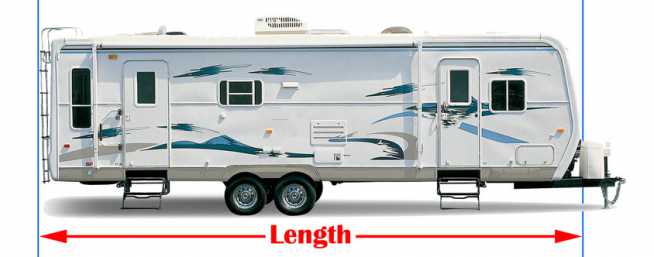
Installing Your RV Cover
Before installing your RV cover, it is recommended you first clean your RV to remove any dirt or debris. You will also want to ensure you pad any sharp edges that may damage the cover (rain gutters, gutter spouts, corners, etc).
Note: You can elect to climb on your roof to install your cover or use a step ladder. In either case exercise caution when installing your cover.
To install the cover, do the following:
- Unpack and locate the front of the cover. You should find a tag sewn in that is labeled "Front".
- Un-buckle any buckles that are connected and remove any weights connected to any buckles.
- Lay the cover out so that exterior roof portion is facing upward.
- Fold the sides in to the center and roll the cover up from BACK to FRONT.
- Place the cover on the roof at the FRONT of the RV, and unroll the cover toward the back.
- Note: If you are unable to place the cover on the roof still rolled up, you can place it on the ground and pull it over your RV (illustrated in the video below).
- With a properly "inside-out" folded cover, the sides will begin to fall or can easily be unrolled to fall into place.
- Attach the weights to the buckles to throw them under the RV to the other side.
- Disconnect the weights, and connect the buckles.
- Connect the front and rear buckles to remove slack from the cover and ensure a snug fit.
- Remove slack from the buckles under the RV and this will ensure a snug fit all-around.
Video: How To Install Your RV Cover
Wrapping It Up
With your cover installed, your RV is ready for its slumber until you are ready to rescue it from storage! To get your RV cover, or if you have any questions, contact our Parts Department through our website, email them at parts@sicardrv.com or call us them at 1-800-688-2210.



